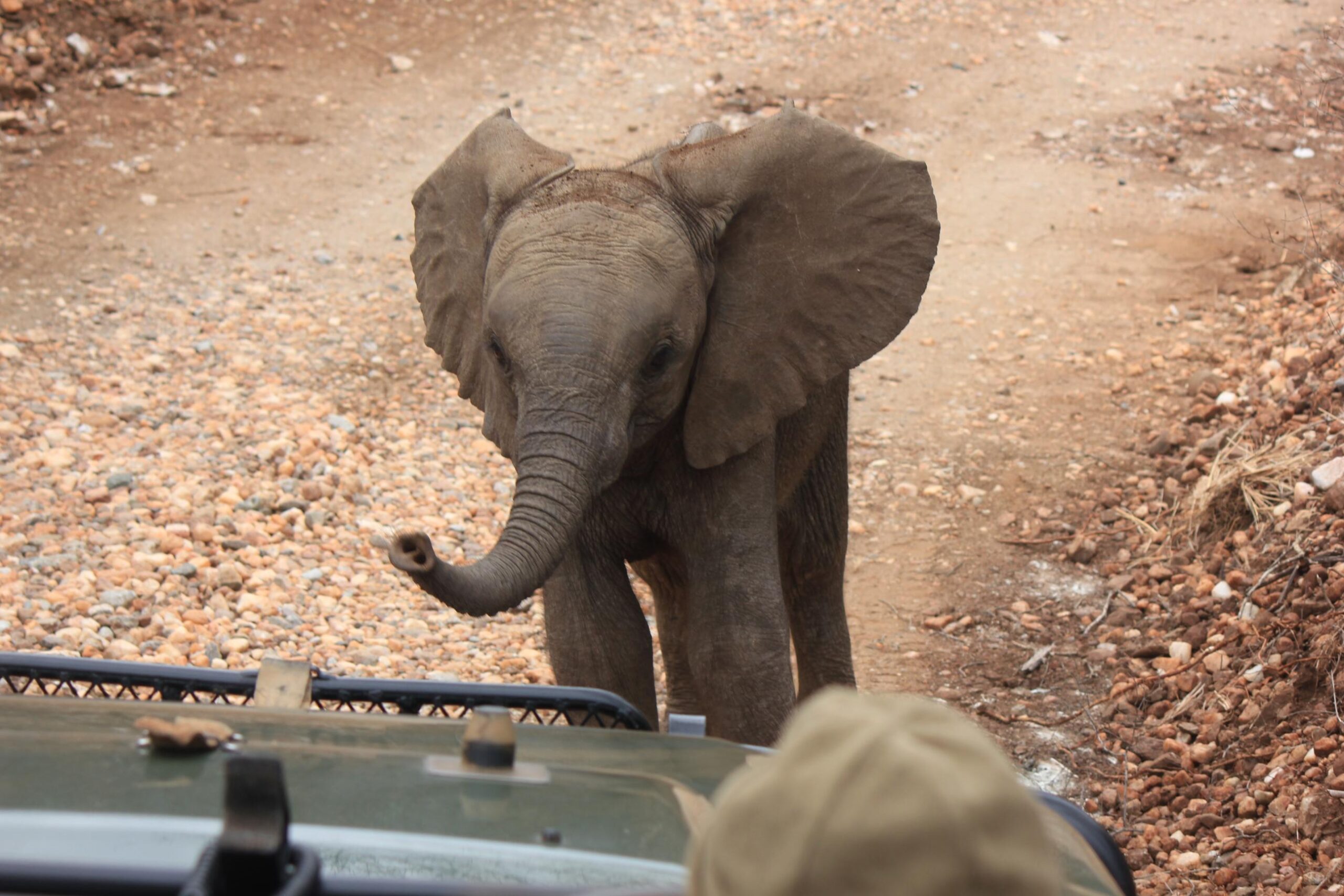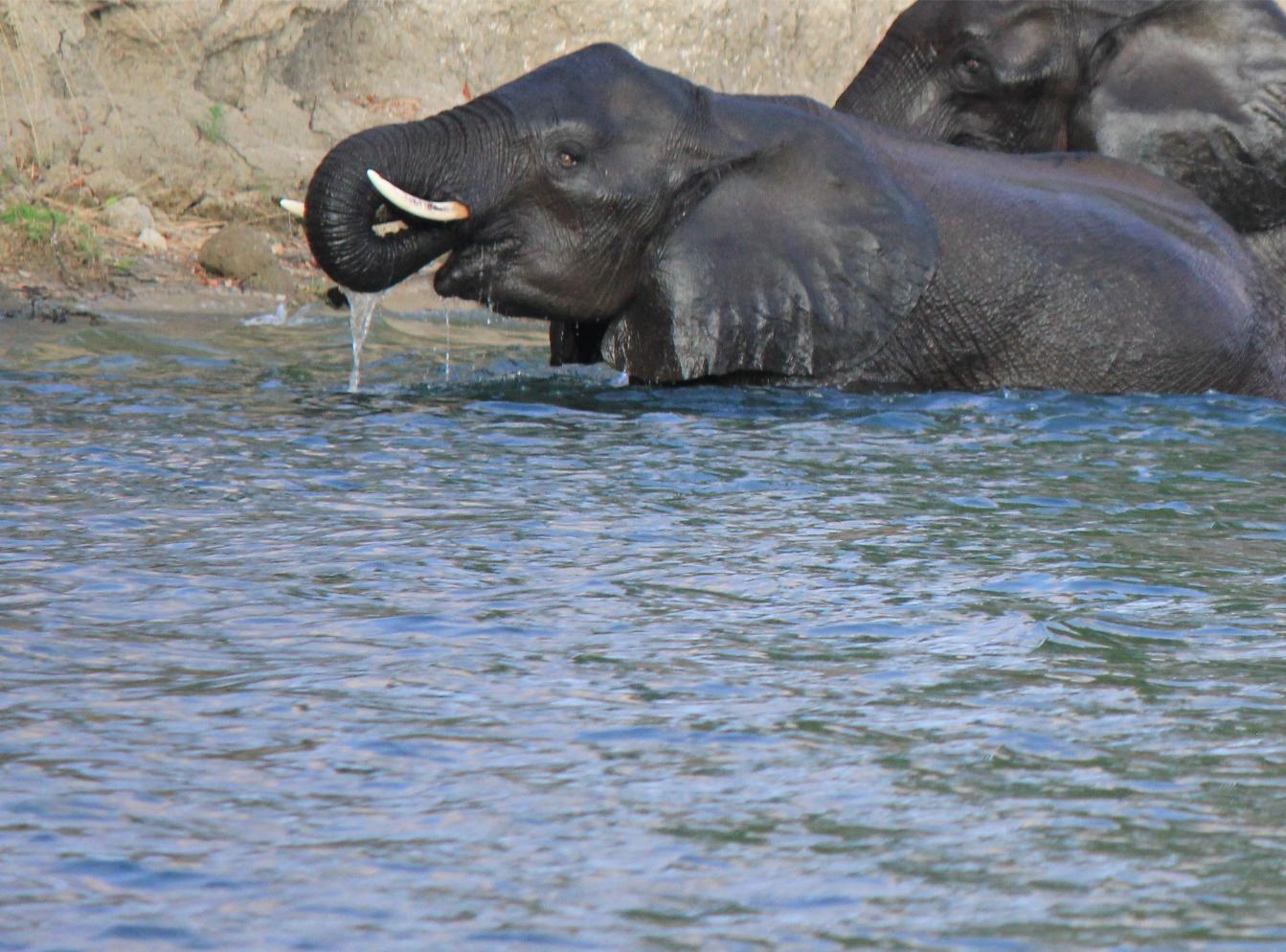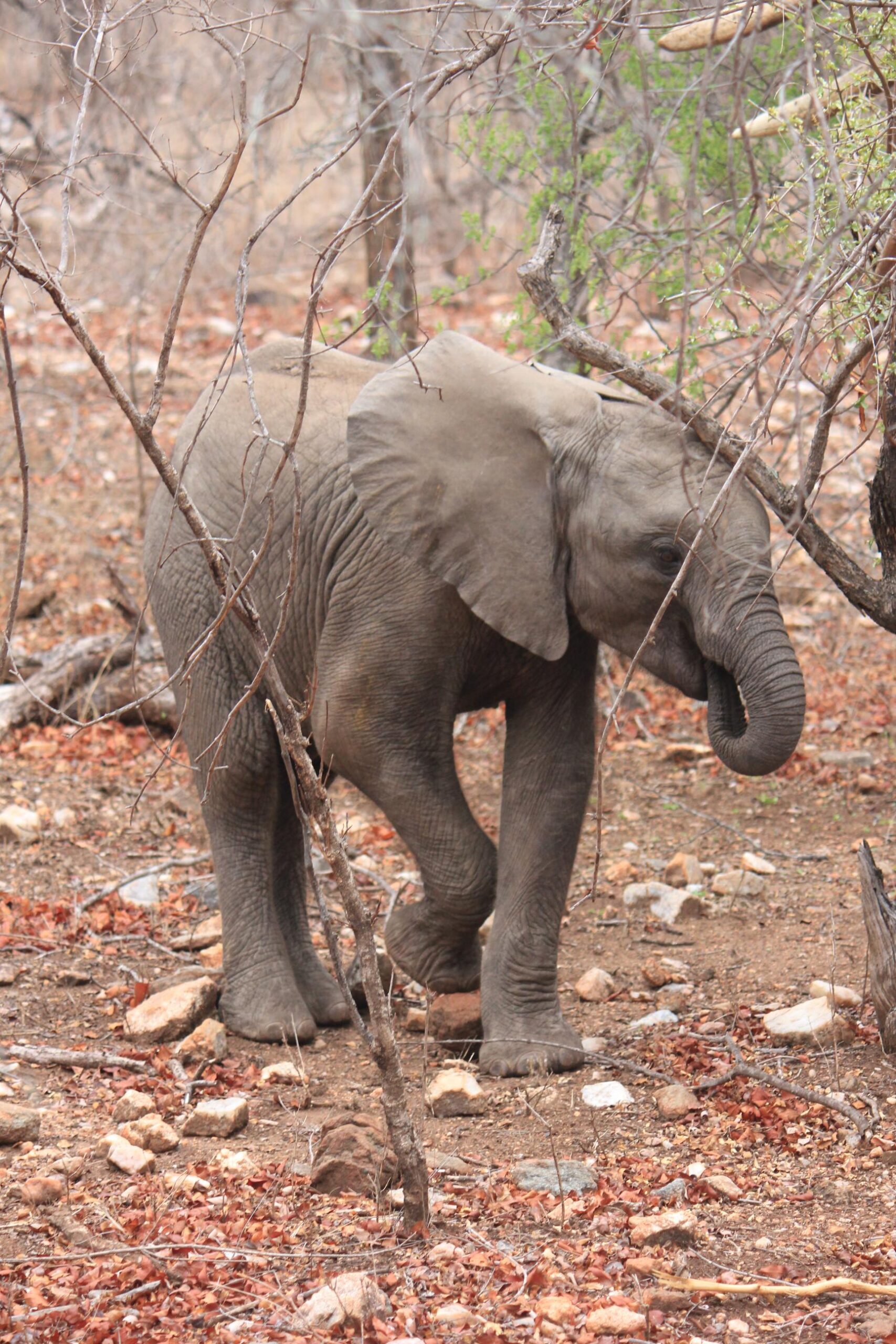I was very fortunate to recently visit South Africa and Zimbabwe after a veterinary conference. Since 100% of the pet owners we meet are animal lovers, I thought I would share some information and pictures about his incredible trip.

Elephants are among the most impressive creatures we saw in South Africa & Zimbabwe.
They embody strength, intelligence, and deep social bonds.
These giants play a vital role in the ecosystem and hold a special place in the hearts of conservationists and wildlife enthusiasts alike.
Let’s explore the lives of these remarkable animals and the challenges they face.
Two Majestic Species
South Africa is home to the African bush elephant, the largest land animal on the planet.
Very recently, in 2021, genetic research showed that these giants are distinct from their relatives, the African forest elephants, which inhabit regions further north in Africa.
Kruger National Park: A Sanctuary for Giants
One of the best places to observe elephants in their natural habitat is Kruger National Park (we visited a reserve just South of Kruger, called Makalali).
With over 19,000 elephants, the park boasts one of the largest populations in South Africa.
This protected area serves as a crucial refuge, allowing these majestic animals to thrive – despite the many challenges they face elsewhere.
Family and Social Bonds
At the core of elephant society is the matriarchal herd.
These groups are led by the oldest and wisest female, who guides her family through the complexities of survival.
From finding waterholes to teaching youngsters essential life skills, the matriarch plays a critical role.
The bonds within these herds are profound.
Elephants are known to mourn their dead, often lingering near the remains of lost companions in a touching display of grief.

Communication and Intelligence
Elephants have extraordinary intelligence and memory.
They communicate using a range of methods, including low-frequency sounds, called infrasound, which can travel up to 6 miles (10 km).
Their ability to solve problems, learn through observation, and remember waterhole locations decades later underscores their brain function.
So the saying “An elephant never forgets” is actually true.

Lifelong Journeys
With lifespans reaching up to 60–70 years, elephants experience decades of life in the wild.
During this time, they travel vast distances – sometimes 6-12 miles (10–20 km) in a single day – in search of food and water.
Their herbivorous diet requires 440-660 lbs (200–300 kg) of vegetation daily !!!
Can you imagine eating that amount of forage every day?
This diet includes grass, leaves, bark, fruits, and roots, depending on the availability and season.
Water is also essential: up to 50 gallons (200 liters) per day!
Both eating and drinking enough are a challenge during the dry season… as we witnessed firsthand…

The Role of Ecosystem Engineers
Elephants are often referred to as “ecosystem engineers” for their ability to shape their environment.
Since there are only so many leaves they can reach, they will knock down an entire tree, just to eat the leaves at the very top.
To the untrained eye, elephants seem incredibly destructive.
Yet by uprooting trees, trampling vegetation, and dispersing seeds through their dung (aka poop), they create open spaces and foster plant growth, benefiting countless other species in the ecosystem.

Unique Adaptations
Despite their massive size, elephants move with surprising stealth, thanks to a unique cushion of fatty tissue in their feet, which also minimizes noise.
Their 1 inch (2.5 cm) thick skin provides protection but remains sensitive to sun and insect bites, necessitating dust baths to shield themselves.

Interestingly, elephants practice geophagia – the consumption of soil – to supplement their nutritional needs, although this behavior can wear down their teeth, hastening the end of their lives once their final set of molars is gone.

The Challenges of Survival
Elephants face significant threats, including habitat loss and poaching.
The demand for ivory has driven illegal hunting, despite international bans, and human-elephant conflict arises as human populations encroach on elephant habitats.
These conflicts often occur when elephants raid crops or damage property in search of food.
One night, we saw a herd of elephants march casually in the middle of the small town where we stayed in Zimbabwe!
Conservation Efforts
Elephants are legally protected in South Africa, and numerous conservation initiatives are underway.
Anti-poaching measures, habitat preservation projects, and community-focused programs aim to ensure a future for these gentle giants.
A Legacy Worth Protecting
Elephants inspire awe and remind us of the intricate connections within the natural world.
Their intelligence, social bonds, and role as ecosystem engineers highlight their importance, not just to their environment but also to humanity.
By supporting conservation efforts, we can secure a future where elephants continue to roam freely, enriching the landscapes they call home and inspiring generations to come.
We can’t help your elephant, but if you would like to learn how we can help your cat or your dog.
If you would like to learn how we can help your pet with safe surgery and anesthesia, please contact us through www.LRVSS.com
Never miss a blog by subscribing here: www.LRVSS.com/blog
Phil Zeltzman, DVM, DACVS, CVJ, Fear Free Certified
